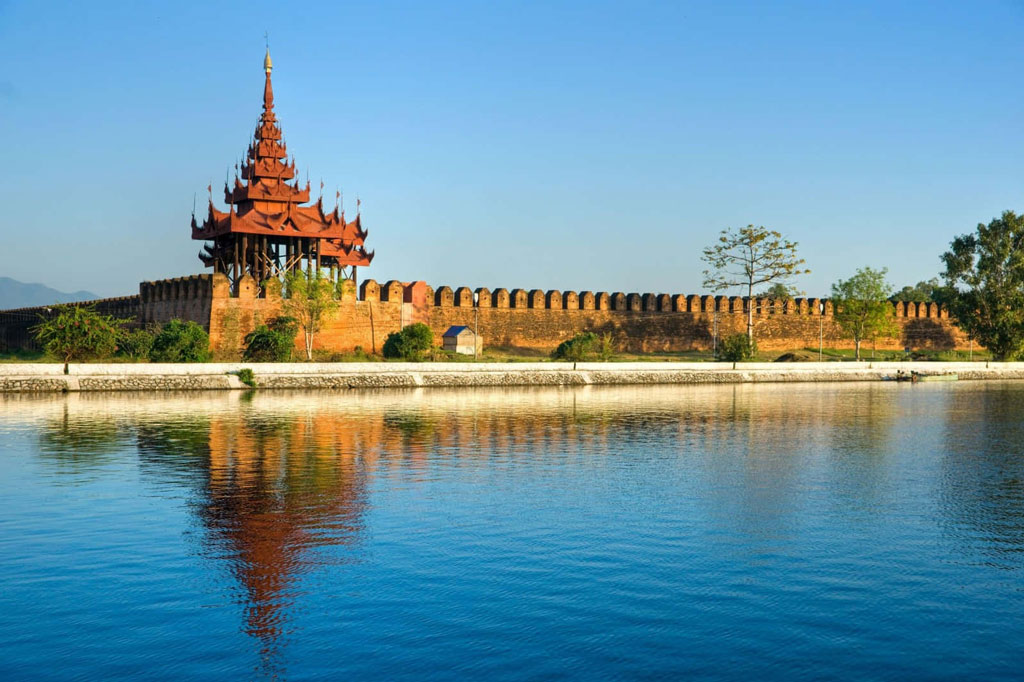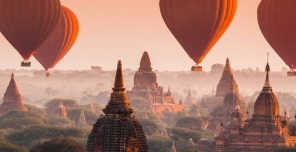
Visit Mandalay: Top 8 Best Things To Do

Mandalay is the second-largest city in Myanmar and is situated in the central part of the country. It is well-known for its rich cultural heritage, historical significance, and role as a major Buddhist center.
Among the many attractions, there are some things for culture lovers like us to do, so check out Mandalay Guide with Hanoi Voyages for all the details and tips!
Table of Contents
Best time to visit Mandalay
The dry season is from November to February. It enjoys pleasant weather with little rainfall and cool temperatures. Therefore, the dry season has become the peak tourist season in Mandalay and is a wonderful time to visit. The hot season is usually from March to April when the weather is dominated by searing heat and there is less rainfall. The rainy season is from May to October. It brings heavy rainfall and high humidity. Afternoon downpours are common, and the city can experience flooding. The best time to visit Mandalay is from November to February when the weather is cool and dry. This is also peak tourist season, so be prepared for larger crowds and higher prices.
Things to do in Mandalay
Mandalay Palace

Mandalay Palace is the last royal palace of the Burmese monarchy. It was built during the reign of King Mindon in 1857. The king moved the capital from Amarapura to Mandalay, and the palace was constructed to serve as the royal residence and administrative center.
The palace is an excellent example of traditional Burmese palace architecture. It features a series of stunning wooden buildings, including the main palace, throne halls, watchtowers, and defensive walls.
Visit Mandalay Hill

Once you get to Mandalay, you can’t miss Mandalay Hill in what is otherwise a very flat city. One of the primary reasons to visit Mandalay Hill is for the breathtaking panoramic views it offers. The hill stands at an elevation of 760 feet (230 meters), and from its summit, you can see the city of Mandalay and the surrounding landscape, including the Irrawaddy River.
You can reach the summit of Mandalay Hill by climbing a covered stairway with around 1,700 steps. It's a leisurely climb, and many visitors choose to do it, stopping at various temples and shrines along the way.
Sandamuni Pagoda

The Sandamuni Pagoda is most renowned for its large central stupa (pagoda) that is glistening white. You will find the largest iron image of Buddha which was cast in 1802
In addition to the central stupa, the Sandamuni Pagoda complex includes several smaller temples and shrines, each containing various Buddha images, statues, and religious relics.
Kuthodaw Pagoda

The Kuthodaw Pagoda is often referred to as the "World's Largest Book" due to its exceptional collection of sacred texts. The pagoda complex contains 729 marble slabs, each housed in its own small stupa or shrine.
The central stupa of the Kuthodaw Pagoda is also impressive. It is a golden pagoda that stands tall in the center of the complex. It is surrounded by smaller stupas, each containing the inscribed marble slabs.
U Bein Bridge

U Bein Bridge is widely regarded as the world's longest and oldest teakwood bridge. It runs for about 1.2 kilometers (0.75 miles) across Taungthaman Lake in Amarapura, a former royal capital of Myanmar. The bridge was built in the mid-19th century using reclaimed teakwood columns from the former royal palace during the move to Mandalay.
U Bein Bridge is not only a tourist attraction but also an integral part of local life. U Bein Bridge is only a 20-minute drive from Mandalay. Arrive two hours before sunset, and see how the locals are relaxing here.
Shwenandaw Monastery

The Shwenandaw Monastery is famous for its beautiful architecture and intricate woodcarvings. The beautiful wooden details in the monastery are worth a visit. It is small so you don’t need a lot of time and it’s a quick stop from Mandalay Palace.
Mandalay Markets
Mandalay is known for its vibrant markets, which offer a wide variety of goods, from traditional Burmese handicrafts to fresh produce.
One of the largest and busiest markets in Mandalay is Zegyo Market. It's a great place to shop for clothing, accessories, household items, and local snacks. Go here in the early morning, wander around and see how these locals spend their morning.
Visit a Gold Leaf Workshop
Mandalay is the center of the handmade gold leaf industry and visiting one of the local gold-leaf workshops is one of the most interesting things to do in Mandalay.
At a gold leaf workshop, you'll have the opportunity to witness skilled artisans working on the delicate and intricate process of creating gold leaf. The process typically involves hammering a small piece of gold into an incredibly thin sheet. This craftsmanship has been passed down through generations and is an integral part of Myanmar's cultural heritage.
Best hotels in Mandalay
When staying in Mandalay, you have several neighborhoods and areas to consider, each offering a unique experience. There are plenty of hotels in the city center to choose from, ranging from budget-friendly guesthouses to luxury hotels. Here are some recommendations on where to stay in Mandalay:
Mingalar Mandalay Hotel
Mingalar Mandalay Hotel is located in Mandalay, 3.3 kilometers from Mahamuni Buddha Temple. It has an outdoor swimming pool, free private parking, a fitness center, and a garden. This 5-star property is packed with in-house facilities to improve the quality and joy of your stay.
Hotel by the Red Canal Mandalay
Rated with 4 stars, this high-quality property provides guests with access to massage, restaurant and hot tub on-site. The Hotel by the Red Canal is a 5-minute drive from Mandalay Palace. Mandalay Hill, the city center and Zegyo Market are all within a 15-minute drive of the hotel.
Royal Pearl Hotel
Strategically located in Central Mandalay, you will have easy access to local attractions and sights. Mandalay Palace is a 10-minute walk away, and Mandalay International Airport is 32 kilometers away. A ticket service and luggage storage are also available. Cycling is one of the many activities available on-site or in the surrounding area.
Ease Hotel
Mandalay Palace is 2.7 kilometers from the accommodation, while Shwenandaw Monastery is 3.1 kilometers away. The nearest airport is Mandalay International Airport, 37 km from Ease Hotel. Furthermore, Ease Hotel provides accommodation with a garden, free private parking, a terrace and a restaurant.
How to get to Mandalay
| Top 3 ways to get to Mandalay |
|
Dream about your trip to Asia, in private
We are here to make it happen with youFREE QUOTE, WITHOUT OBLIGATION












